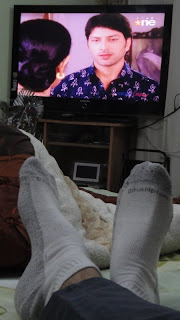
by Rajbir Deswal
No, I am not talking about the Kashmir issue, immensely known as the ‘K’ factor, and as a spoke in the wheel too in Indo-Pak conflict resolution, but the subtler connotations of it, as in the burnt-bridges of human relations.
“Something there is that doesn’t love a wall; that wants it down!” said Robert Frost but when it comes to interpersonal relations amongst the humans, there are many things that stunt the thawing and adding carbon, to clog and congest.
My grandfather and his elder brother were very good friends too. And they used to say that their brotherly relations started having a dent in them when they had children. Siblings when they have their own children, begin to have differences.
There are painful instances of parents even coming to a stage when they disown their children. It happens generally when the latter bring them bad name, by either earning notoriety, or treating them like dirt.
Children too have their reasons to burn boats with their parents on issues relating to their upbringing, property etc but mostly when the parents themselves prove unworthy of their credit besides falling in esteem, socially.
Grandmas and grandpas don’t command commensurate love, if they did not play with, or pamper their grand children in their childhood, though instances are there when indulgent progeny hunt for their lost ancestry. Grannies invite frowns from their grand children when they dye hair and wear perfumes.
Cousins are no more cousins when they are made real. Expectations then rise and take their toll on asking for more. Same goes with nephews and nieces. Rural and urban backgrounds have their respective dire straits and loose ropes, in maintainability of relations.
A Haryanvi anecdote has it that a man, having his daughter’s son (dohta) on his shoulders made his son’s son (pota) walk along with him on foot. The pota holding the finger of his Dada shoos away the attacking dogs, while the dohta riding above, pooches the dogs into chasing his Nana. No generalisation, but as I said, rural society has hardcore binds for certain relations.
Between the best of friends, if there is money given or taken on loan, you are announcing the end of it all.
Gurus and chelas lose their respective places when the former asks for the thumb of his Eklavya and the latter when he sets his eyes on the Guru’s daughter. The case of modern-day ‘PhD-guides’, though, is different being ‘need based’. Soul-mates stop being so, when they become goal-mates.
I cannot help but count amongst a-kind-of-relationship, and the best in my personal reckoning, which obtains as between Amitabh-Hema and Salman and picturised in ‘Baagwaan’. Or Rajesh Khanna and Johny Walker in ‘Anand’; Sanjiv Kumar and Sharmila in ‘Mausam’. But the symptom of the present times is best reflected in the question-Hum aapke hain kaun?
Mutual sustenance is the key to obtainment of all relations and Bapu, Chacha or Bhai have totally different semantics to their tags. And Mamu, reserved for pulis-walas, is my all-time favourite relation.
http://www.tribuneindia.com/2010/20101230/edit.htm#5





